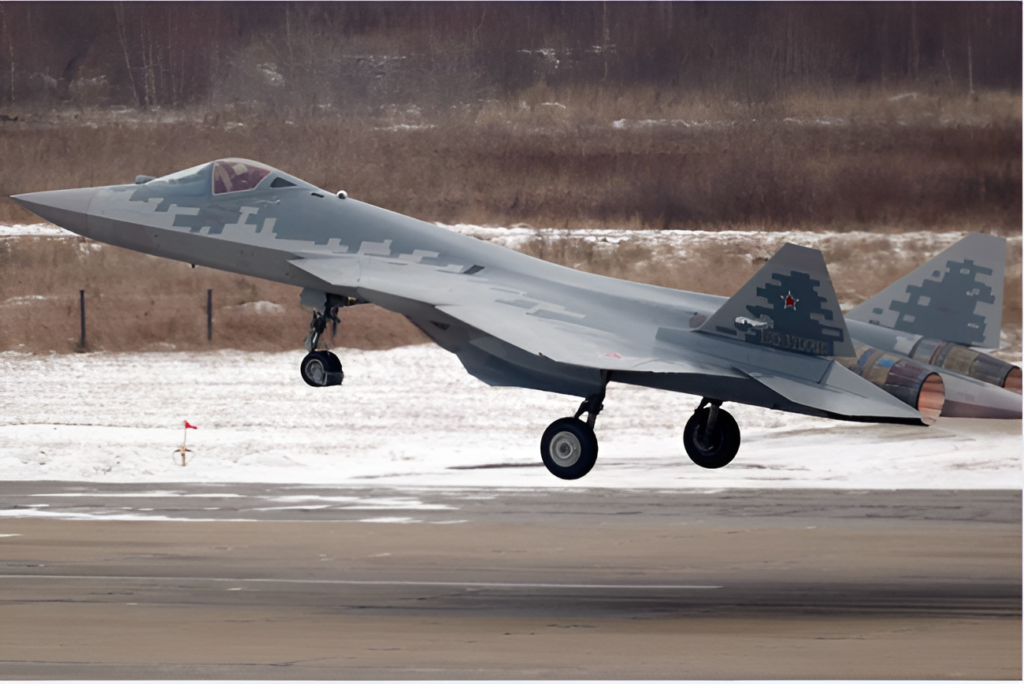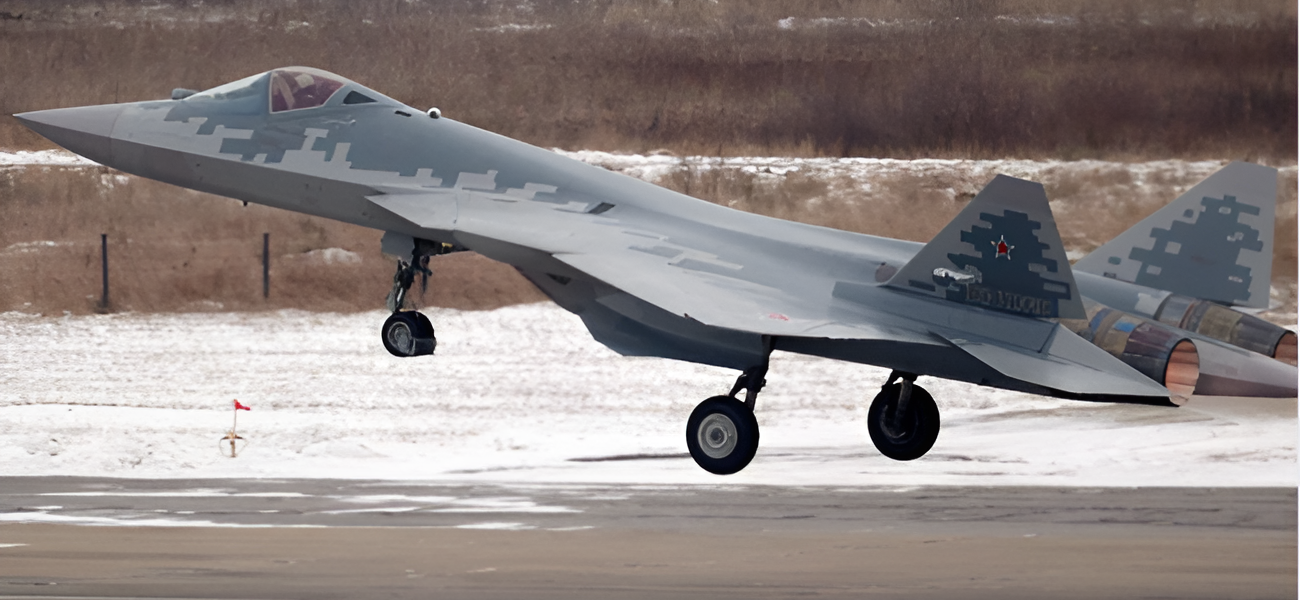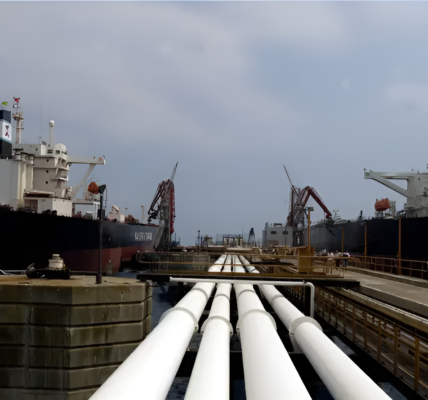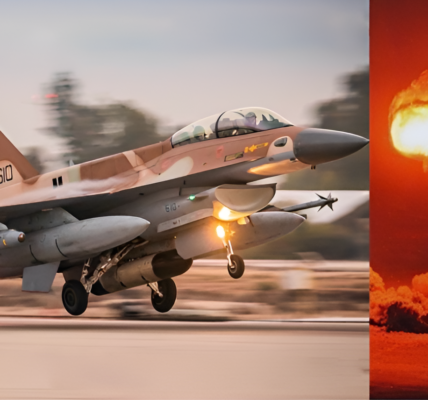
Russia is ramping up production of its fifth-generation Su-57 fighter jet, with the Komsomolsk-on-Amur Aviation Plant in the Russian Far East unveiling new facilities to support faster production and testing. The expansion, coinciding with the plant’s 90th anniversary, is part of a broader strategy to enhance Russia’s military capabilities. These new facilities will not only facilitate the production of the Su-57 but will also enable testing of its fuel systems and onboard radio-electronic equipment.
In 2023, the plant delivered 12 Su-57 jets, a significant increase from six in the previous year. Output is expected to reach 20 jets in 2024, with further increases projected in the coming years, potentially surpassing 30 aircraft annually. By 2027, the Su-57 fleet is expected to grow to 76 aircraft, up from the current 22, with some reports suggesting that Russia could also export a contingent of 14 Su-57 jets to Algeria.
Yuri Slyusar, head of the state-run United Aircraft Corporation, emphasized that the expansion is part of a multi-year investment program aimed at modernizing the plant. “This initiative has resulted in the creation of a cutting-edge, large-scale, high-tech production facility for the manufacture of the most advanced aviation systems,” he remarked. The facility’s advanced technologies include augmented reality headsets that assist production workers in manufacturing, offering a glimpse into the future of aircraft assembly.
While some early Western critiques questioned the Su-57’s stealth capabilities, particularly during the prototype phase, recent serial production models have shown substantial improvements. These jets now feature enhanced radar-evading qualities, boosting their stealth and making them more comparable to leading U.S. and Chinese fifth-generation fighters.
Director of the Komsomolsk-on-Amur Aviation Plant, Alexander Pekarsh, highlighted that the new facilities would also support the construction of a third phase of galvanic production, backed by state investment. This expansion will improve production efficiency and sophistication. With this increase in production capabilities, Russia aims to phase out older aircraft, such as the Su-30 and Su-35, in favor of focusing on the Su-57 and the Su-34 strike fighter.
Although the Su-57 program has faced delays, initially slated for 50 operational fighters by 2020 and 200 by 2025, it has still managed to prove itself in combat. The Su-57 has been deployed in the Ukrainian theatre since early 2022, conducting precision strikes, suppressing enemy air defenses, and engaging in air-to-air combat. Despite delays, the Su-57 remains one of the most thoroughly tested fifth-generation aircraft of its generation, and its fleet is set for rapid expansion in the coming years.




